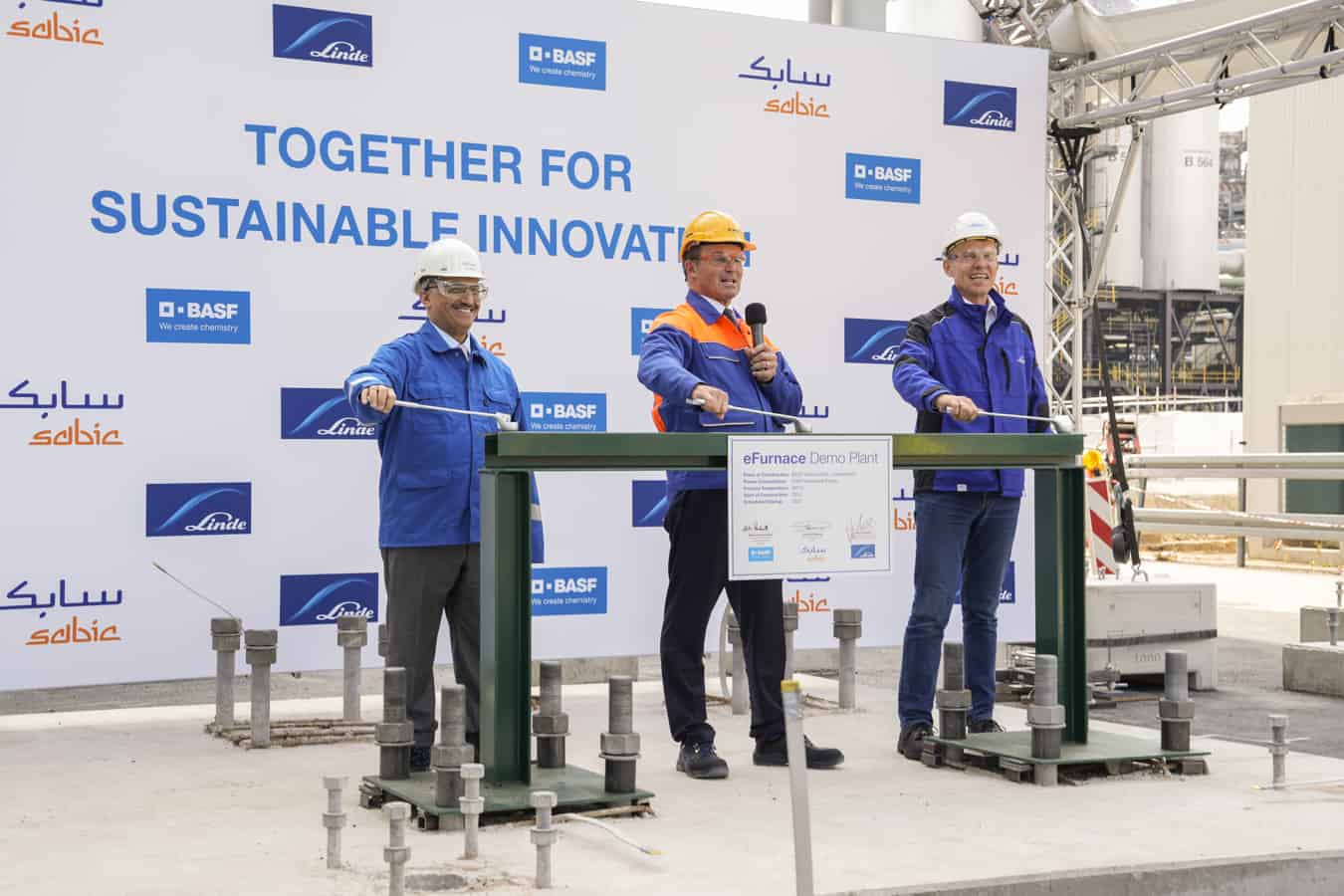Riyadh, Saudi Arabia–SABIC, BASF and Linde have begun work on the construction of the world’s first model of an electrically heated steam cracking unit.
The new technology relies on the use of electricity from renewable sources instead of natural gas, which can reduce carbon dioxide emissions from one of the most energy-intensive production processes in the chemical industry by 90 percent compared to conventional technologies commonly used, SPA reported.
The fully electric heating unit will be integrated into one of the existing steam crackers at BASF’s Verbund site in Ludwigshafen, Germany.
The unit will test two different heating process concepts, process about four tons of hydrocarbons per hour and consume 6 megawatts of renewable energy/electricity.
The pilot unit is scheduled to start operation in 2023, with BASF, SABIC and Linde aiming to develop large-scale commercial production units that can achieve a significant reduction in CO2 emissions, compared to current technologies.
The electric heating unit aims to demonstrate the possibility of continuous production of olefins using electricity as a heat source. The unit is designed so that two heating methods can be tested together, namely, direct heating, which depends on a direct electric current on the tubes inside the reactor, and indirect heating, which depends on the radiant heat of the heating elements installed around the tubes. It is expected that the testing of these two methods will contribute to enhancing the flexibility of responding to the requirements of different customers and locations.
Steam cracking units play a major role in the production of basic chemicals and require a large amount of energy to break down hydrocarbons into olefins and aromatics. The reaction usually takes place in furnaces at temperatures of about 850 degrees Celsius, which is the degree that furnaces currently reach using fossil fuels. This project aims to reduce carbon dioxide emissions by converting this process to electricity.
BASF and SABIC will bear the investment cost of the pilot unit, and the unit will be operated by BASF, while Lindy will handle the engineering, construction and procurement works for the project, as well as the future marketing of the developed technologies.
As part of this joint work, the German Federal Ministry of Economic Affairs and Climate Protection awarded the project €14.8 million, as part of its “industry decarbonization” programme, to help overcome challenges related to current global conditions and energy costs, the report said.
Commenting on this step, SABIC Vice Chairman and CEO Yousef bin Abdullah Al-Bunyan stressed that the company’s vision aims to achieve transformation in its business and help address pressing global challenges through efficient carbon management.
Al-Bunyan indicated that the project includes huge potentials for all petrochemical industries around the world in light of the trend towards reducing carbon emissions in industrial processes, expressing his hope that this joint achievement will contribute to more cooperation between the three and other parties in order to put an end to greenhouse gas emissions. Thermal energy through the circular carbon economy.








